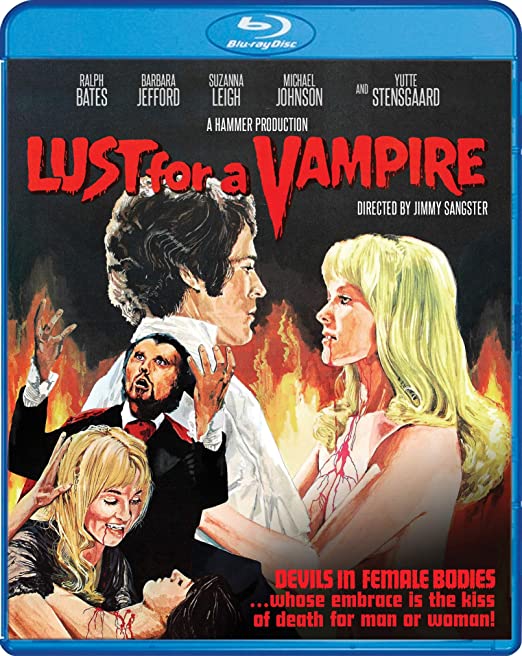
Lust for a Vampire
It sucks to be the middle child
by Phil Bailey
Ahh…the much maligned Lust for a Vampire. The middle sister in Hammer Films’ “Karnstein Trilogy” (which social media is attempting to shoe horn Captain Kronos Vampire Hunter as the 4th Karnstein film) based ever so loosely on Sherien LeFanu’s novella Carmilla. None of the Hammer horrors ever bothered to adhere to the source material and Lust for a Vampire has little in common with LeFanu’s book besides lesbianism and vampires, but let us not fool ourselves, that combo is usually enough. While Hammer made some un-questioned classic horror and sci fi films in the 50-70s they also had their fair share of clunkers and many regard this film to be among them, but I feel Lust for a Vampire has gotten a bad reputation for reasons I’ll never understand and find it to be one of the more entertaining of the studio’s films of the 1970s. It is not especially transgressive but it is a solid enough first vampire flick that still has people watching and discussing nearly 50 years later so it is not without its charms.
The 1971 film, directed by Jimmy Sangster opens with the Count and Countess Karnstein performing black magic rites to revive their vampiric ancestor Carmilla Karnstein (Yutte Stensgaard) who, once returned to corporeal form enrolls in the neighboring girls boarding school under the anagrammatic pseudonym Mircalla. Once there she promptly disrupts the pastoral tranquility by seducing and feeding off of her new classmates. She has not gone unnoticed by the male members of the faculty. Giles Barton (Ralph Bates) wants to be inducted into the black arts and poor Richard Lestrange (Michael Johnson) actually falls in love with her. The school’s curriculum seems to largely be devoted to “Grecian dancing” in lingerie in the garden, sexy calisthenics, skinny dipping, and breast biting. I mean seriously, what’s not to love? Things start to get touchy when Susan, (Pippa Steel) one of Mircalla’s playthings, dies. Her parents are hardly satisfied with the headmistress’s explanation for their young daughter’s demise and launch an investigation and find vampires and black magic afoot in the school. The townsfolk mobilize with torches and pitchforks to render fiery retribution against the undead in their midst, and the fool Lestrange is there defending the vampire until her eventual impalement and even then has to be forcibly pulled away from the inferno engulfing Castle Karnstein.
The film certainly contains Joe Bob Briggs’ “3-Bs: blood, breasts, and beasts” so why is it more reviled than beloved by Hammer fans? I think in no small part because for a Hammer production it is weirdly non-British. Lust for a Vampire makes much more sense as a Eurocult film. If it had come out of Italy, Spain, or Germany it would be less of a misfit. It probably isn’t an accident as Hammer was struggling in the ’70s and trying to cash in on whatever was hot and would get bums on seats was the style of the day. Now trying to do a pulpy, sexy, gothic vampire romp in the comparatively sexless world of British cinema was always going to feel a bit stilted alongside the unhinged decadence of Jean Rollin and Jess Franco. Nevertheless the movie works in large part because of the charm and chemistry of the actresses and the lighter touch from director Jimmy Sangster who wisely chose to not take the whole affair too seriously, but didn’t let it fall into self parody. By design or default he managed to mine a rich vein of camp which suits the film quite well and allows it to be the kind of tasty cinematic junk food we all crave.












